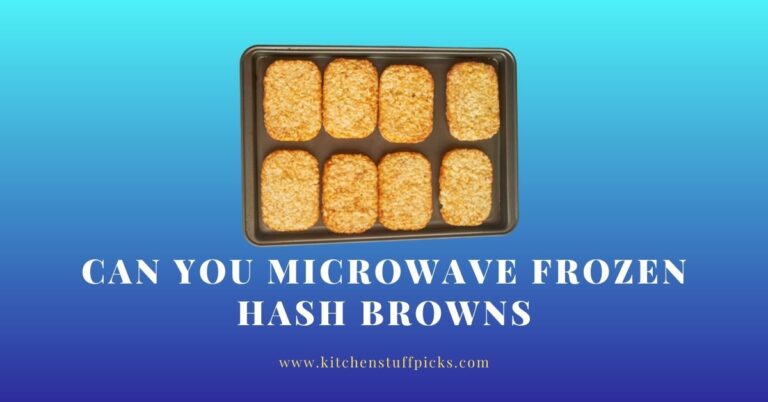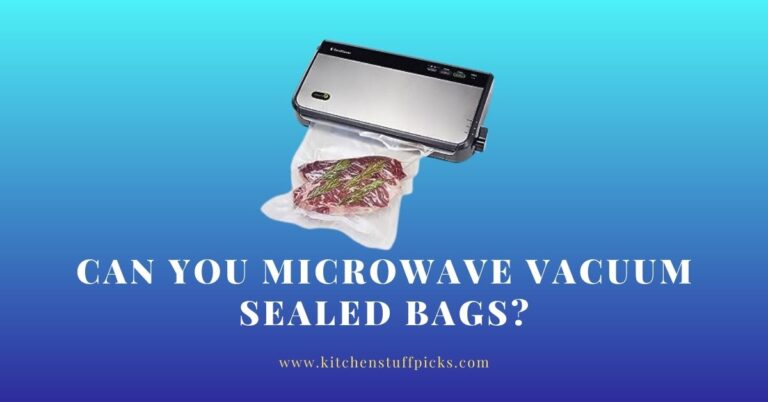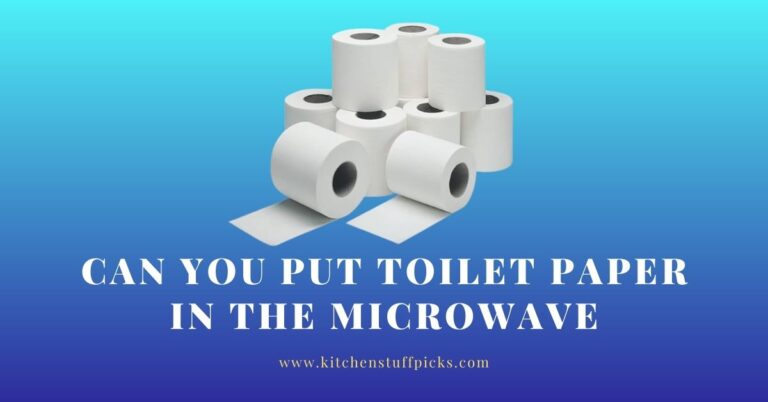Can Napkins Go in the Microwave? Navigating Safety and Compatibility
In the fast-paced world of modern cuisine, the microwave stands as a culinary cornerstone, transforming leftovers into satisfying meals and accelerating the cooking process. Yet, amidst the convenience, a fundamental question looms: Can napkins go in the microwave?
This query, seemingly straightforward, delves into the intricacies of microwave safety and compatibility—a terrain that demands a comprehensive understanding to ensure both kitchen efficiency and safety.

Understanding Microwaves and Napkins: Demystifying the Microwave Phenomenon
Microwaves, electromagnetic waves that speed up the heating of food, work by exciting water molecules within the edibles. This process creates the heat that characterizes microwave cooking.
Napkins, made from various materials like paper and cloth, are crucial for both the aesthetic presentation and hygiene in the culinary context. However, when napkins and microwaves are combined, it reveals a complex interaction of materials and safety concerns that require careful investigation.
Microwaving Paper Napkins: Balancing Aesthetics and Prudence
The notion of microwaving paper napkins conjures images of convenience paired with potential peril. Paper napkins, known for their disposability and functionality, are generally safe for brief microwave usage.
However, a degree of discernment is required: Opting for unprinted napkins prevents unsightly ink transfers to your culinary creations. Moreover, utilizing paper napkins to cover dishes is not only a practical choice to mitigate splatters but also a safety measure to avert potential risks.
Yet, it’s crucial to remain vigilant, as prolonged microwaving of paper materials can lead to fire hazards.
Related Post: Can You Microwave Water Bottles?
Microwaving Cloth Napkins: Navigating Warmth and Prudence
Cloth napkins, synonymous with elegance and sophistication, can indeed be introduced to the microwave realm. Natural fibers like cotton are resilient companions in this endeavor, able to withstand microwave heat without compromising safety. Nevertheless, the realm of cloth napkin microwaving necessitates circumspection.
Synthetic blends, a common presence in modern fabrics, can meet a molten fate, emphasizing the need for selective material choices. An indispensable rule remains: Supervision during microwave usage is imperative, as even the finest cloth can pose fire risks if not attended to diligently.
Decorative Elements on Napkins: Artistry versus Microwave Pragmatism
For those drawn to the allure of decorative napkins adorned with metallic accents or intricate embellishments, a precautionary narrative takes center stage. Metallic components and microwave radiation are a combustible combination, leading to sparks that transform your kitchen into an unexpected spectacle.
Even seemingly innocuous glued-on elements can release noxious fumes when exposed to microwave heat. The prudent course of action is to preserve the decorative showcase for environments more suited to their aesthetics.
Best Practices for Microwaving Napkins: Ensuring Culinary Security
As we ascend towards the pinnacle of prudent microwave utilization, the implementation of best practices assumes paramount importance.
These practices stand as sentinels guarding the harmonious coalescence of napkins and microwave technology, ensuring not only culinary excellence but also an unwavering commitment to safety.
Vigilance: The Bedrock of Microwave Mastery
At the core of these best practices lies the virtue of vigilance. Such meticulous monitoring guarantees that the napkin remains within its temperature limits, averting any potential hazards and untoward consequences.
Interval Modulation (Can Napkins Go in the Microwave?)
Another cardinal rule entails the orchestration of short intervals when microwaving napkins. This methodical approach, characterized by alternating brief periods of heating and pauses, allows the napkin to be gradually warmed without reaching temperatures that could trigger unintended reactions or risks.
Safety Net: A Microwave-Safe Dish as a Guardian
Adding an additional layer of safety involves placing a microwave-safe dish beneath the napkin. This strategic placement serves as a safeguard against unforeseen spills or splatters, thus preventing any potential mess from encroaching upon your culinary space.
Micro-Testing: A Prelude to Napkin Microwave Dance
Before fully immersing a napkin into the microwave realm, a practice of micro-testing is advised. This involves subjecting a small, inconspicuous portion of the napkin to microwave heat, thereby gauging its response and ascertaining whether any adverse reactions might transpire.
Exploring Safer Approaches: Innovations in Ensuring Culinary Safety
Kitchen technology keeps solving culinary challenges. When considering the question of microwaving napkins, the realm of alternatives shines as a testament to culinary ingenuity and safety consciousness.
Embracing these alternatives not only elevates our cooking practices but also underscores our commitment to a safe and efficient kitchen environment.
Diversifying Options: Microwave-Safe Covers
Microwave-safe covers emerge as a versatile and reliable alternative to microwaving napkins. Designed explicitly to withstand the rigors of microwave radiation, these covers shield your food from splatters and ensure even heating.
Crafted from materials that are impervious to the microwave’s electromagnetic waves, these covers serve as a protective barrier, preserving both your meal’s integrity and your microwave’s cleanliness. The culinary landscape’s response to the question of napkin microwaving is an embodiment of forethought and progress.
Wax Paper: A Culinary Protector
Wax paper, a tried-and-true ally in the kitchen, presents itself as an effective shield against the microwave’s radiant energy. Placing wax paper over your dish before reheating not only prevents unsightly splatters but also fosters an efficient, heat-retaining environment.
With its microwave-safe composition, wax paper stands as a testament to the practicality of exploring alternatives, enabling us to bypass the uncertainties associated with napkin microwaving.
Microwave-Safe Containers: Redefining Convenience
Advancements in culinary safety have given rise to microwave-safe containers—meticulously designed vessels that not only accommodate reheating but also ensure optimal heat distribution.
These containers, crafted from materials that harmonize with microwave radiation, represent an innovative departure from traditional methods. By embracing these purpose-built containers, we embrace not only safety but also a heightened culinary experience.
A Holistic Approach to Culinary Innovation
The exploration of alternatives to microwaving napkins reflects a holistic approach to culinary innovation—one that prioritizes both the final outcome and the processes leading to it.
As our kitchens become hubs of creativity and gastronomic exploration, safety and efficiency take center stage. The question of whether napkins can enter the microwave unfolds into a broader discourse, inviting us to ponder the various solutions that epitomize our commitment to excellence.
Common Microwave Safety Mistakes: Navigating the Hazards of Culinary Overconfidence
In the intricate symphony of culinary practices, the microwave emerges as a modern maestro, orchestrating convenience and efficiency in the kitchen. However, as with any performance, even a minor misstep can result in unexpected consequences.
This segment of our exploration delves into the realm of common microwave safety mistakes, where culinary overconfidence can lead to culinary catastrophes if not approached with caution and awareness.
Neglecting Non-Microwave-Safe Items: A Recipe for Disaster
One of the cardinal errors that often arises in the microwave domain is the neglect of non-microwave-safe items. Microwaves operate on the principle of electromagnetic waves interacting with water molecules, generating heat.
Items that are not designed to withstand these waves can lead to fires, sparks, and irreparable damage to the appliance. Metal containers, dishes with metallic accents, and certain types of plastics fall into this category.
Navigating microwave safety necessitates a discerning eye for labels that indicate suitability for microwave usage, ensuring that your culinary endeavors remain within the bounds of safety.
Microwaving Sealed Containers: The Pressure Cooker Paradox
Sealed containers, a convenient means of preserving leftovers, hold a paradox within the microwave environment. As heat builds up within a sealed container, pressure can mount to the point of explosion.
The result? A kitchen scene reminiscent of an action movie, with the potential for scalding food splatters and even harm to individuals nearby. The prudent approach involves ensuring that any container sealed for storage is adequately vented before it enters the microwave.
This simple measure prevents pressure buildup and preserves both your culinary creations and your kitchen’s harmony.
Microwaving Eggs: From Convenience to Catastrophe
Eggs, in their myriad culinary incarnations, are often subjected to the microwave’s rapid embrace. However, their high water content and delicate structure render them susceptible to unexpected consequences. A seemingly innocent attempt to cook or reheat eggs in the microwave can quickly escalate into a chaotic explosion if not handled correctly.
Egg yolks and whites, when trapped within an intact shell, can result in steam buildup, ultimately causing the egg to burst. To avert this culinary calamity, it’s advisable to puncture the egg’s yolk or white with a fork before microwaving, allowing steam to escape and your culinary aspirations to remain unscathed.
Ignoring Stirring and Uneven Heating: The Neglected Culinary Choreography
Microwaves, while efficient, have a tendency to heat unevenly. Ignoring this idiosyncrasy can lead to an unexpected outcome in the form of unevenly cooked food or, in some cases, even burns.
Neglecting to stir liquids or rotate dishes during the cooking process can exacerbate this disparity in heating, resulting in parts of your culinary creation remaining undercooked while others are scalding hot.
The remedy is simple: Incorporate occasional stirring or rotation to ensure that heat is distributed evenly, allowing your dishes to shine with culinary perfection.
Related Post: Can You Microwave Chinese Takeout Containers
Related Post: Can You Microwave Frozen Hash Browns?
Disregarding Microwave-Plastic Compatibility: A Material Misstep
Plastic, an omnipresent element in modern kitchens, must be approached with discernment when introduced to the microwave. Plastics react differently to microwaves, from harmless to dangerous. Plastics marked with the microwave-safe symbol are engineered to withstand microwave radiation.
However, those lacking this indicator can release harmful chemicals into your food or warp under the heat. By adhering to the principle of microwave-plastic compatibility and opting for microwave-safe containers, you safeguard both your cuisine and your well-being.
Conclusion:
In the tapestry of culinary evolution, the microwave has emerged as a symphony conductor, harmonizing convenience and efficiency in modern kitchens. The question of whether napkins can coexist with the microwave has led us through an exploration of safety, compatibility, and alternatives. As we navigate microwave safety, we redefine culinary traditions and kitchen technology.
From the nuanced interactions of microwaves with napkins to the intricate dance of materials, we’ve uncovered a spectrum of considerations that extend beyond mere convenience. A holistic approach, one that integrates safety, practicality, and innovation, defines our culinary landscape.We strive for culinary excellence while protecting our creations and kitchens.
Our journey has taken us through the perils of neglecting non-microwave-safe items, the potential hazards of sealed containers, the cautionary tale of microwaving eggs, the choreography of stirring and even heating, and the plastic compatibility dilemma. These insights underscore that culinary overconfidence can be as treacherous as a poorly executed dish, reinforcing the necessity of knowledge and awareness in our culinary ventures.
As you venture forth into the realm of microwaving, armed with a newfound understanding of safety and compatibility, remember that innovation is not limited to the dishes we create. It also encompasses the methods we employ, the alternatives we embrace, and the standards of safety we uphold. Our kitchens, as centers of culinary exploration, mirror our commitment to progress and safety, ensuring that our culinary experiences are not only delightful but also secure.
FAQs
Can I use any type of paper napkin in the microwave?
While most paper napkins are safe for brief microwave usage, it’s advisable to opt for unprinted napkins to avoid ink transfers. Extended microwaving times can lead to fire hazards, so vigilance is key.
Can I microwave cloth napkins made from synthetic blends?
It’s best to avoid microwaving cloth napkins made from synthetic blends, as they can melt under the heat. Stick to natural fibers like cotton, and always supervise the process to prevent fire risks.
Is it safe to microwave napkins with metallic accents?
No, napkins with metallic accents should never be microwaved, as they can cause sparks and potentially lead to fires. It’s safer to preserve such decorative napkins for non-microwave use.
Are microwave-safe covers a good alternative to napkins for microwaving?
Yes, microwave-safe covers are an excellent alternative. They prevent splatters, ensure even heating, and are designed to withstand microwave radiation, making them a safe and convenient choice.
What should I do if I accidentally microwave a non-microwave-safe item?
If you accidentally microwave a non-microwave-safe item, stop the microwave immediately and remove the item. Non-safe materials can cause sparks, fires, or damage to the appliance. Always check for microwave-safe labels before using items in the microwave.






